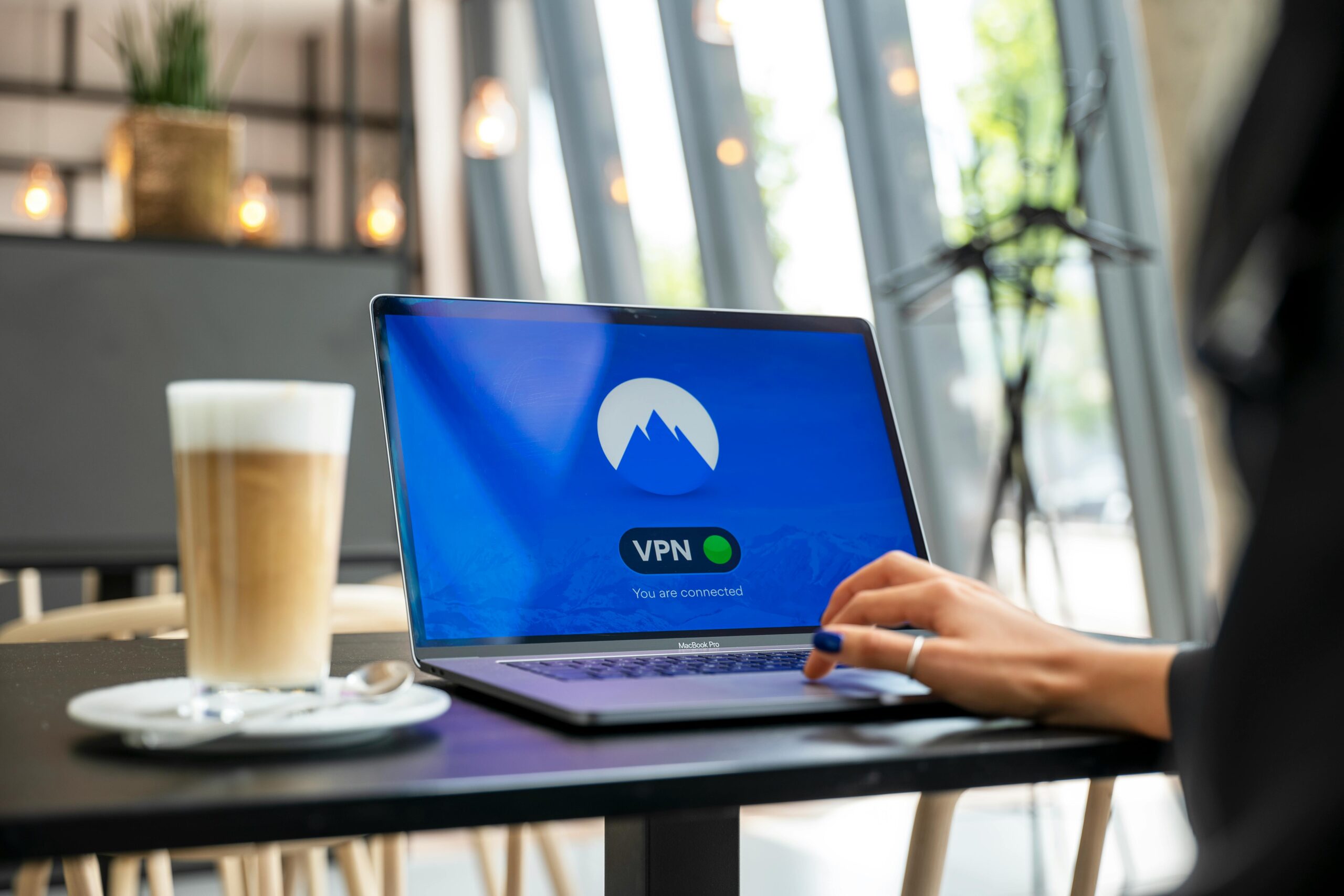In today’s digital age, secure browsing has become more crucial than ever. If you’re looking to enhance your online privacy and protect your data, our Windows 11 VPN Split Tunneling Guide is just what you need! Split tunneling allows you to optimize your internet traffic by routing some of it through a VPN while letting other applications connect directly to the internet. This not only increases your connection speed but also gives you the flexibility to choose which data stays secure. Are you ready to unlock a safer online experience?
Understanding how to set up and utilize VPN split tunneling on Windows 11 can seem daunting, but it’s easier than you think! In this guide, we will walk you through the simple steps to configure split tunneling, ensuring that you can enjoy both security and performance. Imagine streaming your favorite shows without buffering while also keeping your sensitive data away from prying eyes. Sounds appealing, right?
By the end of this article, you’ll not only grasp the concept of VPN split tunneling but also learn how to set it up effectively for your specific needs. Whether you are a casual user wanting to protect your activities or a business professional needing to secure confidential information, our guide will cater to all your needs. So let’s dive in and explore how you can take control of your online privacy and achieve a seamless balance between security and speed!
Mastering Windows 11 VPN Split Tunneling: 7 Essential Steps for Enhanced Online Privacy

Mastering Windows 11 VPN Split Tunneling: 7 Essential Steps for Enhanced Online Privacy
In today’s digital world, online privacy has become a necessity. With so many threats lurking, using a VPN is a great way to shield your data. Windows 11 offers a feature called split tunneling. It allows you to control which applications use the VPN and which ones use your regular internet connection. This guide offers insight into mastering Windows 11 VPN split tunneling in just seven essential steps.
What is VPN Split Tunneling?
VPN split tunneling is a technique that lets you route some of your internet traffic through a secure VPN while allowing other traffic to go through your regular connection. This can be useful for various reasons. For example, if you want to access local services while being connected to a VPN, split tunneling can help. It can also improve your internet speed, since not all your data has to travel through the VPN.
Benefits of Using Split Tunneling
- Improved Speed: By only routing necessary traffic through the VPN, you can experience faster browsing speeds.
- Accessing Local Content: You can access local networks and services while connected to a VPN.
- Enhanced Privacy: Sensitive data can be encrypted while less important traffic can bypass the VPN, this gives you flexibility.
Steps to Enable VPN Split Tunneling in Windows 11
-
Choose a VPN Service: Not all VPNs support split tunneling. It’s vital to pick one that does. Research and compare options. Some popular ones include ExpressVPN, NordVPN, and CyberGhost.
-
Download and Install the VPN: After selecting a service, download and install the VPN on your Windows 11 device. Follow the installation prompts carefully to ensure it’s set up correctly.
-
Open VPN Settings: Launch the VPN application and navigate to its settings or preferences. The location of this option may vary depending on the VPN provider.
-
Locate Split Tunneling Option: In the settings menu, look for the split tunneling feature. This could be under advanced settings or network settings. Make sure you understand how it works.
-
Enable Split Tunneling: Toggle the split tunneling feature on. You may have options to select which apps or websites will use the VPN. This is where the control comes into play.
-
Select Applications: Choose the applications that you want to route through the VPN. This could include your browser or any other sensitive apps. Unselect those you want to bypass the VPN.
-
Test Your Configuration: After setting everything up, it’s important to test your configuration. Use websites like WhatIsMyIP.com to check if your IP address changes when using the VPN for selected apps.
Common Issues and Troubleshooting
- VPN Not Connecting: Sometimes the VPN may fail to connect. Restart the app or your PC.
- Speed Issues: If you notice slow speeds, try switching which apps go through the VPN.
- IP Leak: Always check for IP leaks to ensure your privacy is protected.
Final Thoughts
Mastering Windows 11 VPN split tunneling can greatly enhance your online privacy. With just seven essential steps, you can enjoy secure browsing while maintaining access to local content. It’s a powerful tool that balances security and usability. By understanding and implementing split tunneling, you can stay protected while enjoying the best of both worlds. Don’t underestimate its importance in today’s digital age. Explore your options, and take control of your online experience today!
Why You Need VPN Split Tunneling on Windows 11: 5 Compelling Reasons to Consider

In today’s digital age, the need for cybersecurity is greater than ever. Many users are turning to VPNs (Virtual Private Networks) to protect their online privacy. However, not everyone is aware of the capabilities that come with a Windows 11 VPN split tunneling feature. So, why you need VPN split tunneling on Windows 11? Here’s a guide to help you understand five compelling reasons to consider this powerful tool.
What is VPN Split Tunneling?
VPN split tunneling allows users to choose which applications or traffic routes through the VPN and which goes through the regular internet connection. This means you can enjoy the benefits of a VPN without sacrificing the speed and access of your normal internet connection.
1. Enhanced Speed and Performance
One of the biggest advantages is speed. When all your internet traffic goes through a VPN, it can slow down your connection. With split tunneling, you can send only the necessary data through the VPN, while other activities, like streaming or gaming, can run on your regular connection. This can be especially useful for users who want to maintain fast speeds while still protecting sensitive information.
2. Better Access to Local Content
Using a VPN might restrict access to local services or content. For example, some services may detect that you are using a VPN and block your access. Split tunneling lets you access local content while still keeping your sensitive online activities secure. You can, for instance, watch local news or access banking services without being hindered by the VPN.
3. Increased Security for Sensitive Activities
When you’re handling sensitive activities, like online banking or accessing confidential documents, you want those actions secure. By routing only those applications through the VPN, you ensure that your data is encrypted and protected from prying eyes. Other less sensitive tasks can continue over your normal connection, which provides more flexibility.
4. Customizable User Experience
VPN split tunneling allows for customization based on your needs. You can choose which apps or websites use the VPN, tailoring your internet experience. For example, you might want to route your browser traffic through the VPN while keeping your online gaming connection separate. This level of control can greatly enhance your overall user experience.
5. Cost Efficiency
Sometimes, using a VPN can lead to additional costs, especially if you require premium services for full security. Split tunneling can help you save on those costs by allowing you to limit which data goes through the VPN, thus reducing bandwidth usage and potentially lowering subscription fees. If you only need to secure certain activities, why pay for a full VPN service?
How to Set Up VPN Split Tunneling on Windows 11
Setting up VPN split tunneling on Windows 11 is not too complicated. Here’s a quick guide to help you get started:
- Choose a VPN Provider: Ensure they support split tunneling.
- Install the VPN Software: Follow the installation instructions provided by the provider.
- Access Settings: Open the VPN app and navigate to the settings menu.
- Find Split Tunneling Options: Enable split tunneling in your settings.
- Select Applications: Choose which apps you want to route through the VPN.
- Test Your Setup: Make sure that everything is working as expected.
Using these steps, you can unlock secure browsing and maximize your online experience effectively.
Incorporating VPN split tunneling into your online activities can provide not just security, but also speed and flexibility. By understanding these benefits, you can make informed choices about your digital privacy. Embracing this technology can help you navigate the internet securely, while still enjoying the local content you love.
The Ultimate Windows 11 VPN Split Tunneling Setup: A Step-by-Step Guide for Beginners

Navigating the digital world securely is a challenge that many face today. With the rise of cyber threats and privacy concerns, using a VPN (Virtual Private Network) has become vital. Windows 11 has brought many features, including VPN split tunneling, which allows you to control which apps use the VPN connection and which ones don’t. This guide will show you how to set up Windows 11 VPN split tunneling, making your online experience more secure and efficient.
What is VPN Split Tunneling?
VPN split tunneling is a feature that lets you decide which traffic goes through the VPN and which goes directly to the internet. This means you can access local content while still protecting your sensitive data. It’s like having the best of both worlds! You can keep your browsing secure for certain applications, while still enjoying faster speeds for others.
Why Use VPN Split Tunneling?
- Improved Speed: By not routing all traffic through the VPN, many users find their connection speeds improve.
- Access Local Content: You can access local websites and services without disconnecting from the VPN.
- Enhanced Privacy: You can choose which apps need extra security while keeping other activities unencrypted.
- Resource Management: Save bandwidth by limiting the amount of traffic going through the VPN.
How to Set Up VPN Split Tunneling on Windows 11
Setting up VPN split tunneling might seems complicated, but it’s actually pretty straightforward. Just follow these steps:
-
Choose a VPN Provider: First, you’ll need to select a reliable VPN service that supports split tunneling. Some popular choices includes NordVPN, ExpressVPN, and Surfshark.
-
Install the VPN Application: Download and install the VPN software on your Windows 11 device. Follow the installation prompts until it’s complete.
-
Connect to the VPN: Open the application and log in with your credentials. Then, connect to the VPN server of your choice.
-
Access Settings: Look for the “Settings” or “Preferences” menu within the VPN app. Every application is different, so you may need to explore a bit.
-
Enable Split Tunneling: Find the option for split tunneling. This might be under “Advanced Settings” or “Connection” settings. Toggle the feature on.
-
Select Apps: Choose which applications you want to run through the VPN and which ones should connect directly to the internet. Save your settings.
-
Test Your Configuration: Open your selected apps and check if they’re using the VPN. You can use websites like “whatismyipaddress.com” to confirm your IP address.
Tips for Effective Use
- Regularly Update Your VPN Software: Keeping the software up to date ensures you have the latest security features.
- Check for Leaks: Use tools to check for DNS or IP leaks to ensure your split tunneling setup is working correctly.
- Experiment with Different Apps: Try different configurations to see what works best for your needs.
Common Issues and Troubleshooting
- Not All Apps Show Connectivity: If some apps aren’t connecting as expected, revisit the split tunneling settings and ensure they are correctly configured.
- Slower Speeds: If your connection slows down, try disconnecting and reconnecting the VPN, or consider switching servers.
Setting up Windows 11 VPN split tunneling is a great step towards securing your online activities. With a little bit of setup, you can enjoy both security and speed. By following the steps above, even beginners can confidently navigate the complex world of online privacy. As internet security is increasingly essential, learning to utilize tools like VPNs effectively is a valuable skill for everyone today.
Top 5 VPNs for Windows 11 Split Tunneling: Unlock the Best for Secure Browsing

In today’s digital age, privacy and security is more important than ever. With Windows 11 taking center stage on many devices, users are looking for ways to protect their online activities. One of the most effective methods for enhancing online security is by using a Virtual Private Network (VPN) that offers split tunneling. This feature allows users to route some of their traffic through the VPN while allowing other traffic to access the internet directly. Today, we will explore the top 5 VPNs for Windows 11 split tunneling to help you unlock secure browsing.
What is Split Tunneling?
Split tunneling is a feature that lets you decide which apps or websites use the VPN connection and which connect directly to the internet. This can be useful for various reasons, like improving speed for local activities or accessing content that is region-restricted. For instance, you might want to stream a show on a local service while still keeping your browsing secure.
Top 5 VPNs for Windows 11 Split Tunneling
-
ExpressVPN
- Known for its fast speeds and strong security, ExpressVPN offers intuitive split tunneling features.
- Users can easily select which apps use the VPN, making it a great choice for gamers and streamers.
- It has servers in over 90 countries, which gives you a wide range of options.
-
NordVPN
- With its robust security features, NordVPN provides an easy-to-use split tunneling option.
- The SmartPlay feature helps in unblocking geo-restricted content while keeping your other traffic local.
- It also has a large server network, ensuring high speeds and reliability.
-
Surfshark
- Surfshark is an affordable option that doesn’t compromise on quality.
- It offers a split tunneling feature called Whitelister, letting you choose which applications use the VPN.
- Its unlimited device connections make it stand out for families or multiple devices.
-
CyberGhost
- CyberGhost focuses on user-friendliness and offers a split tunneling feature that’s easy to set up.
- It has specialized servers for streaming and torrenting, allowing users to maximize their online experience.
- With over 7,000 servers worldwide, users can find a fast connection easily.
-
Private Internet Access (PIA)
- PIA is known for its customizable security settings and split tunneling capabilities.
- It allows users to set rules for which applications or websites use the VPN, giving flexibility.
- It also has a strong privacy policy, ensuring your data stays safe.
Why Use a VPN with Split Tunneling on Windows 11?
Using a VPN with split tunneling on Windows 11 has many benefits. It helps in maintaining privacy when browsing while allowing you to access local content. This can be particularly useful if you are traveling or living in a country with strict internet regulations. Moreover, split tunneling can enhance the overall browsing experience by reducing latency for local activities.
Final Thoughts
Choosing the right VPN is crucial in today’s online environment. Each of the VPNs mentioned above offers unique features and benefits, especially when it comes to split tunneling. By using one of these services, you can unlock secure browsing on Windows 11 while enjoying the flexibility of managing your internet traffic. Don’t hesitate to explore these options further to find the best fit for your online needs. With proper setup, you can enjoy the benefits of enhanced privacy without sacrificing speed or accessibility.
Troubleshooting Common Issues with Windows 11 VPN Split Tunneling: Expert Tips and Tricks

Navigating the world of VPNs can be quite tricky, especially if you are using Windows 11 and want to implement split tunneling. This feature allows users to choose which apps or websites use the VPN and which ones don’t. It can be a great way to optimize your internet speed while still maintaining a secure connection for sensitive activities. However, many users face issues when trying to set up or troubleshoot split tunneling. In this article, we will explore common problems and provide expert tips and tricks to help you unlock secure browsing with Windows 11 VPN split tunneling.
Understanding Split Tunneling
Split tunneling is a useful feature that lets you direct some of your traffic through the VPN while allowing other traffic to go through your regular internet connection. This can be particularly useful for streaming content or accessing local services without disconnecting from your VPN. Here’s a closer look at why split tunneling may be beneficial:
- Enhanced Speed: By allowing some traffic to bypass the VPN, users can experience faster speeds for non-sensitive activities.
- Access to Local Resources: Users can access local network devices like printers while still using a VPN for other tasks.
- Improved Bandwidth Management: It helps in managing bandwidth better by reducing the load on the VPN connection.
Common Issues with Windows 11 VPN Split Tunneling
Despite its advantages, users often encounter problems when setting up split tunneling. Here are some of the most common issues along with solutions:
-
VPN Not Connecting: Sometimes, the VPN may fail to establish a connection. This could be due to incorrect settings or network issues. Make sure that the VPN client is properly configured and that you are connected to the internet.
-
Apps Not Using VPN: Another frequent issue is when certain apps don’t seem to utilize the VPN connection even after being selected for split tunneling. You should double-check the settings in your VPN application and ensure that those specific apps are allowed to use the VPN.
-
Inconsistent Speeds: If you notice that your speed fluctuates while using split tunneling, it could be due to how much traffic is being routed through the VPN. Try limiting the number of apps using the VPN to see if it improves performance.
-
DNS Leaks: Users might experience a DNS leak, where requests are sent outside of the VPN, compromising security. To fix this, check your DNS settings and consider using a secure DNS provider.
Troubleshooting Tips
Here are some expert tips for troubleshooting Windows 11 VPN split tunneling:
-
Check Network Settings: Ensure your network settings are optimized for the VPN. Sometimes, firewall settings can block VPN connections.
-
Update VPN Software: Always use the latest version of your VPN software. Updates often include important fixes and improvements.
-
Restart the Device: A simple restart can solve many connectivity issues.
-
Test Different Servers: If your VPN provider offers multiple servers, try connecting to a different one. Your current server may be experiencing issues.
-
Contact Support: Don’t hesitate to reach out to your VPN provider’s support team. They can provide specific guidance for your configuration.
Practical Example of Split Tunneling
Let’s say you are working remotely and need to access your company’s internal resources securely while also streaming your favorite shows. By enabling split tunneling, you can use your VPN for company applications, ensuring secure access, while your streaming services can function without the VPN, providing better speed and performance.
In summary, Windows 11 VPN split tunneling can offer a great balance of security and performance when set up correctly. By understanding common issues and how to troubleshoot them, you can make the most of your VPN experience. Whether you are a casual user or someone who relies heavily on secure connections, split tunneling provides a flexible solution that caters to various internet needs.
Conclusion
In summary, implementing VPN split tunneling on Windows 11 can significantly enhance your online experience by allowing you to segregate your internet traffic. This ensures that sensitive data is routed through the VPN while less critical traffic uses your regular internet connection, optimizing both speed and security. We explored the different methods available for setting up split tunneling, including built-in Windows features and third-party VPN software options. Each method offers unique advantages, so choosing the right one depends on your specific needs and technical comfort level. As you navigate the complexities of online security, consider incorporating split tunneling into your VPN strategy to enjoy a more efficient and secure browsing experience. Take the next step toward maximizing your online privacy and performance by reviewing your current VPN settings and implementing split tunneling today.

